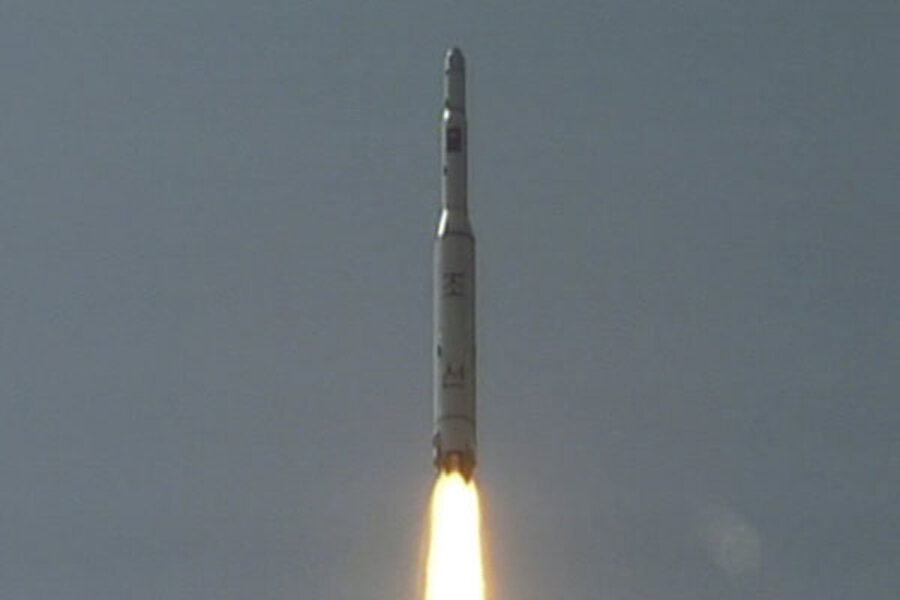North Korea vows satellite launch, with rocket that could reach Hawaii
Loading...
| Seoul
North Korea vowed today to launch a satellite from a long-range missile despite the protests of what it called “hostile forces” including the US, Japan, and South Korea.
The North’s determination to go ahead with the launch around the time of the April 15 centennial of the birth of founding leader Kim Il-sung most likely sets the course for another cycle of international recriminations while the North refuses to talk seriously about giving up its nuclear program.
North Korea defended its defiance of demands by the US and others to cancel the launch as exercise of its “right to use space for peaceful purposes.” As explained by Pyongyang’s Korean Central News Agency, “The satellite launch for scientific researches….can by no means be a monopoly of specified countries.”
Officials and analysts alike, however, strongly doubt if the North’s goal is to launch a satellite. The obvious purpose, they say, is for North Korea to test the latest version of a missile with a range that could deliver a small nuclear warhead as far as Hawaii, Alaska – or even the US west coast.
“We all know their purpose is to have missiles,” says Choi Jin-wook, long-time North Korea expert at the Korea Institute for National Unification. “I’m not sure they if they can put a satellite into orbit.”
If anything seems certain, however, it is that the launch will undermine the stalled six-party talks on reaching a deal for North Korea to abandon its nuclear program. The talks, chaired by China, including envoys from the US, Japan, Russia, and North and South Korea, were last held in Beijing in December 2008.
Hopes were high for resumption of the talks after US and North Korean envoys, meeting in Beijing, reached agreement on February 29 for North Korea to abide by a moratorium on missile and nuclear tests. North Korea last test-fired a long-range missile in April 2009 and conducted its second underground nuclear test the next month.
North Korea’s announcement on Friday, however, set off alarm bells from Washington to Tokyo and the capitals of Europe. China, North Korea’s sole ally, the source of almost all its oil and much of its food and other supplies, expressed concern while Russia warned against a launch.
North Korea in its statement today did not mention the comments from Beijing and Moscow while going to considerable lengths to describe its plan as “a precious result of scientific researches conducted by scientists and technicians.” The mission, said the report on the Korean Central News Agency, is “to develop and utilize working satellites indispensable for the country's economic development, pursuant to the government's policy for the peaceful development and use of space.”
The report backed up that statement by claiming to have “strictly abided by relevant international regulations and practice” in launching two other “space stations.” In fact, US scientists say the North failed to put satellites into orbit in two previous long-range missile launches – and even question whether satellites were attached to the missiles, which fell into the Pacific Ocean.
Nonetheless, Choi Jin-wook believes North Korea will admit inspectors from the International Atomic Energy Agency for the first time in three years, as promised on February 29. He predicts US and North Korean officials will go into more talks before the US begins sending 240,000 tons of food aid, also as agreed on.
“North Korea might be in big trouble after the missile test,” says Choi, “but we all know Washington cannot do much as long as China is behind them.”







